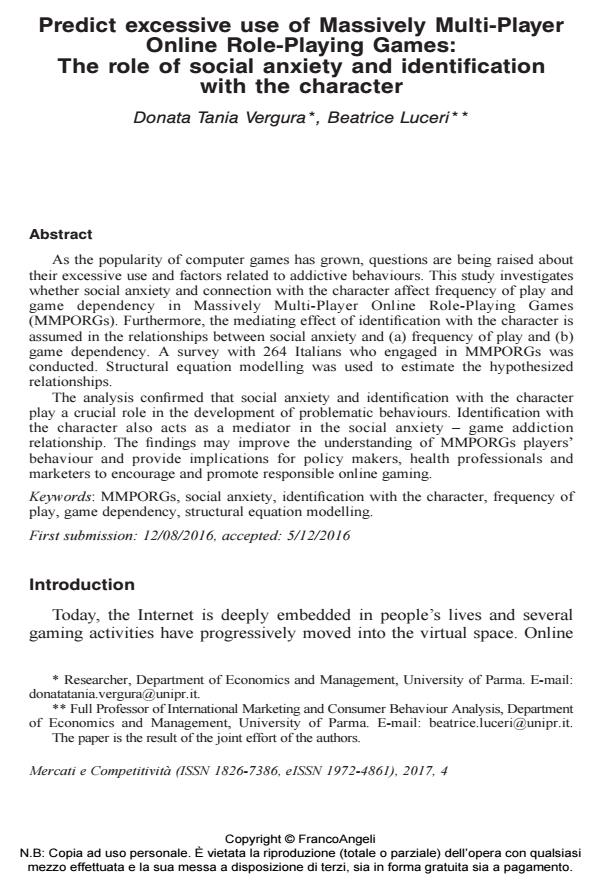Predict excessive use of Massively Multi-Player Online Role-Playing Games: The role of social anxiety and identification with the character
Journal title MERCATI & COMPETITIVITÀ
Author/s Donata Tania Vergura, Beatrice Luceri
Publishing Year 2017 Issue 2017/4
Language English Pages 17 P. 19-35 File size 112 KB
DOI 10.3280/MC2017-004002
DOI is like a bar code for intellectual property: to have more infomation
click here
Below, you can see the article first page
If you want to buy this article in PDF format, you can do it, following the instructions to buy download credits

FrancoAngeli is member of Publishers International Linking Association, Inc (PILA), a not-for-profit association which run the CrossRef service enabling links to and from online scholarly content.
As the popularity of computer games has grown, questions are being raised about their excessive use and factors related to addictive behaviours. This study investigates whether social anxiety and connection with the character affect frequency of play and game dependency in Massively Multi-Player Online Role-Playing Games (MMPORGs). Furthermore, the mediating effect of identification with the character is assumed in the relationships between social anxiety and (a) frequency of play and (b) game dependency. A survey with 264 Italians who engaged in MMPORGs was conducted. Structural equation modelling was used to estimate the hypothesized relationships. The analysis confirmed that social anxiety and identification with the character play a crucial role in the development of problematic behaviours. Identification with the character also acts as a mediator in the social anxiety - game addiction relationship. The findings may improve the understanding of MMPORGs players’ behaviour and provide implications for policy makers, health professionals and marketers to encourage and promote responsible online gaming.
Keywords: MMPORGs, social anxiety, identification with the character, frequency of play, game dependency, structural equation modelling.
Donata Tania Vergura, Beatrice Luceri, Predict excessive use of Massively Multi-Player Online Role-Playing Games: The role of social anxiety and identification with the character in "MERCATI & COMPETITIVITÀ" 4/2017, pp 19-35, DOI: 10.3280/MC2017-004002